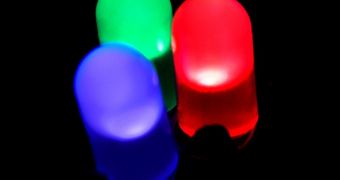Even though LED backlit units (BLUs) have not yet managed to become more widespread than CCFL/EEFL BLUs in large-size TFT-LCD panels, this situation seems ready to change by next year. LED backlights have already become dominant among notebooks, netbooks and most other types of mobile computers, because of their low power use. DisplaySearch predicts that LEDs are now ready to make a strong incursion into the market for larger widescreen LCD panels and TVs.
The overall impression is that LEDs will become common among LCD TVs with screen sizes of 26-inch or lower. In addition, the mass-production of large numbers of 18.5-inch to 24-inch LCD monitors is already underway. If the situation progresses at the same pace, CCFL/EEFL BLUs will become a minority by next year, with LEDs expected to reach a penetration of 74% by 2013.
“Without a doubt, LED backlights will be the dominant light source in all applications in 2011 – representing a significant business and technology evolution for the entire backlight and panel supply chain,” Kevin Kwak, DisplaySearch director of LED backlight unit research, noted.
The growing marketing performance will be boosted by the Energy Star 5.0 specification and is expected to manifest not only in the case of PC displays, but also in TVs. In fact, the number of LED-backlit TVs is expected to jump from the 36.5 million units (a 20% penetration rate) in 2010 to a 72% penetration by 2015 (184.9 million). In parallel, LEDs will hold an 84% share of the 2010 PC shipments, with 95% predicted for 2011. This will be enabled by the falling prices of side-view, high-intensity (1,900-2,200 mcd) white LEDs.
“In order for LCD TVs with LED BLUs to gain market share, they must provide attractive performance and cost competitiveness simultaneously,” Kwak added. “Three main components will play a role in reducing costs: LED chips, light guide plates and dual brightness enhancement films.”
Notebooks will continue to adopt LEDs because the extra cost is outweighed by the power-saving benefits, as is, in fact, the case with all other devices.

 14 DAY TRIAL //
14 DAY TRIAL //